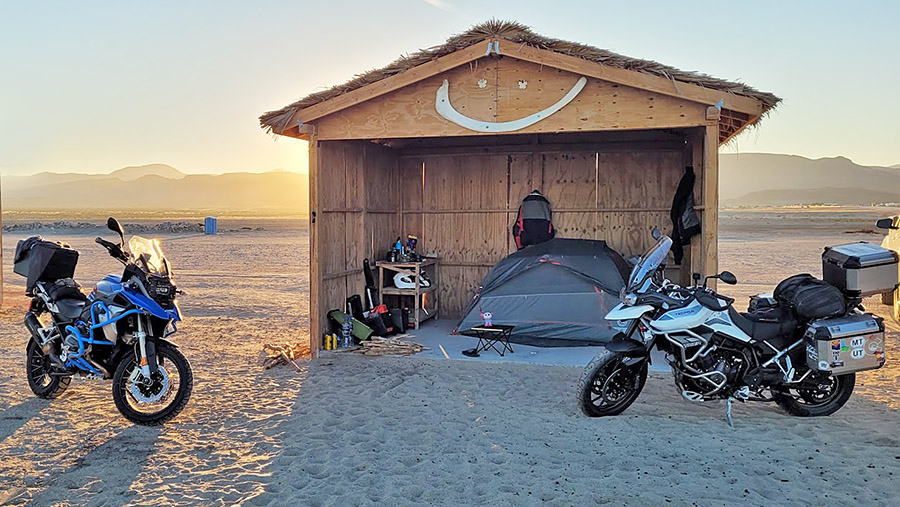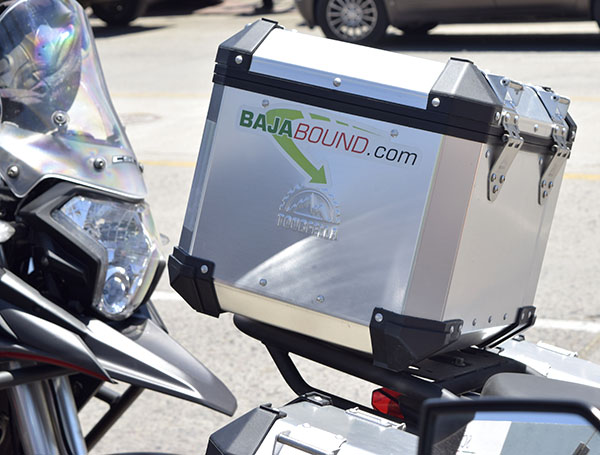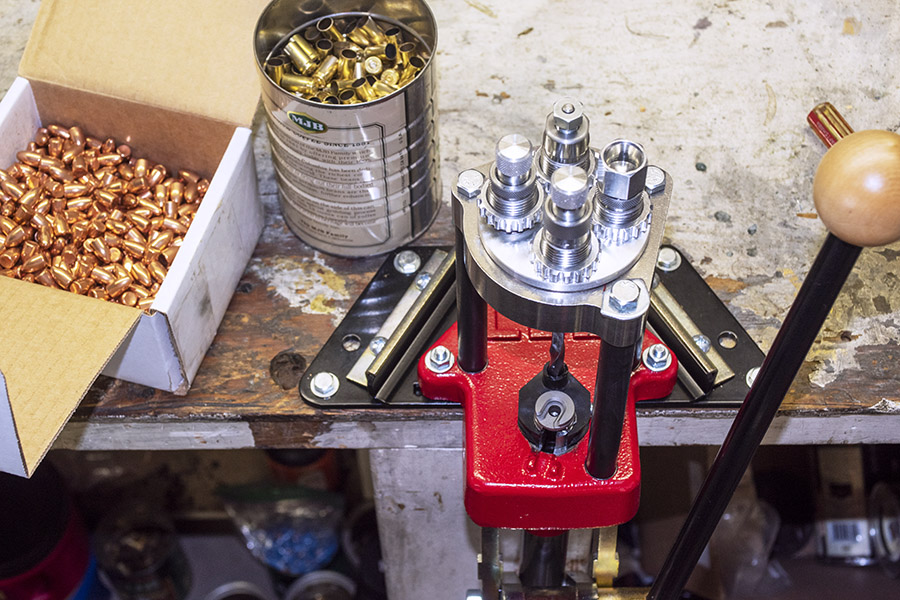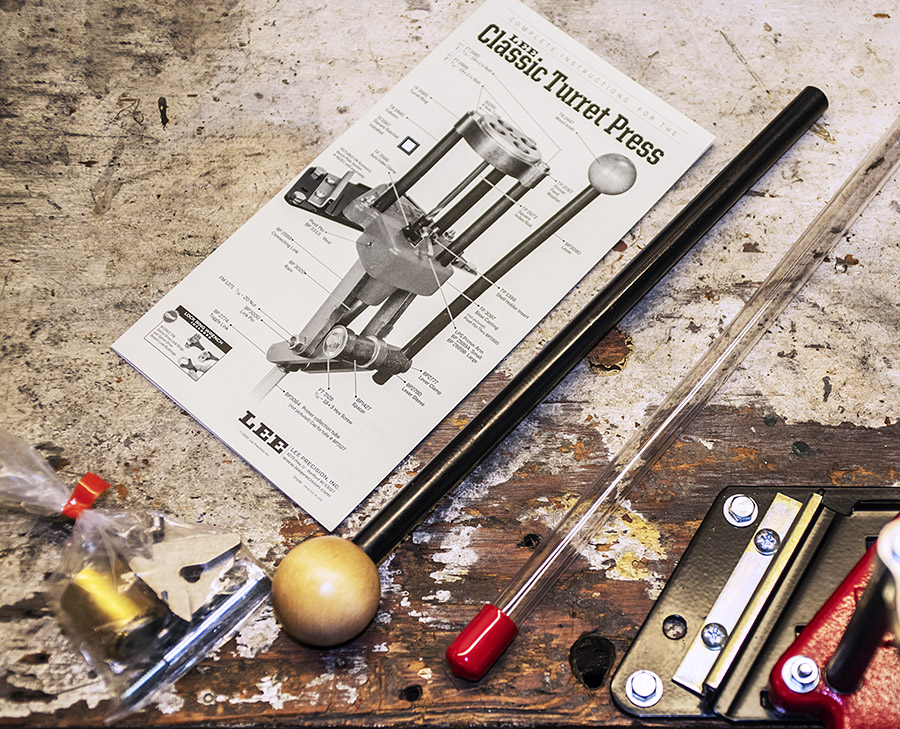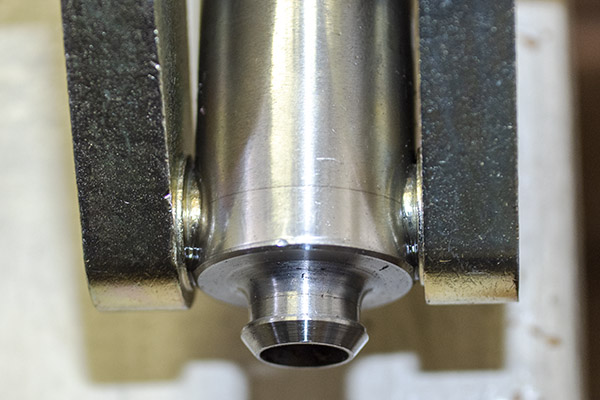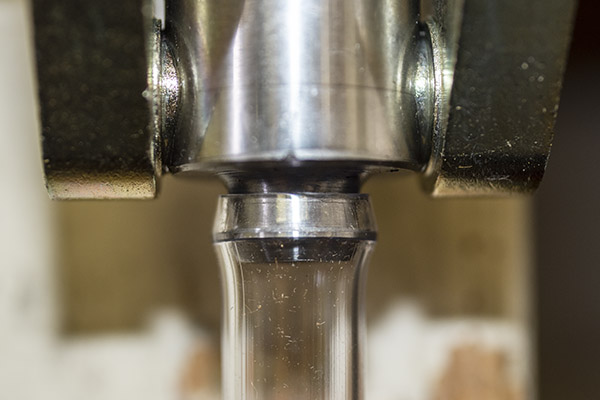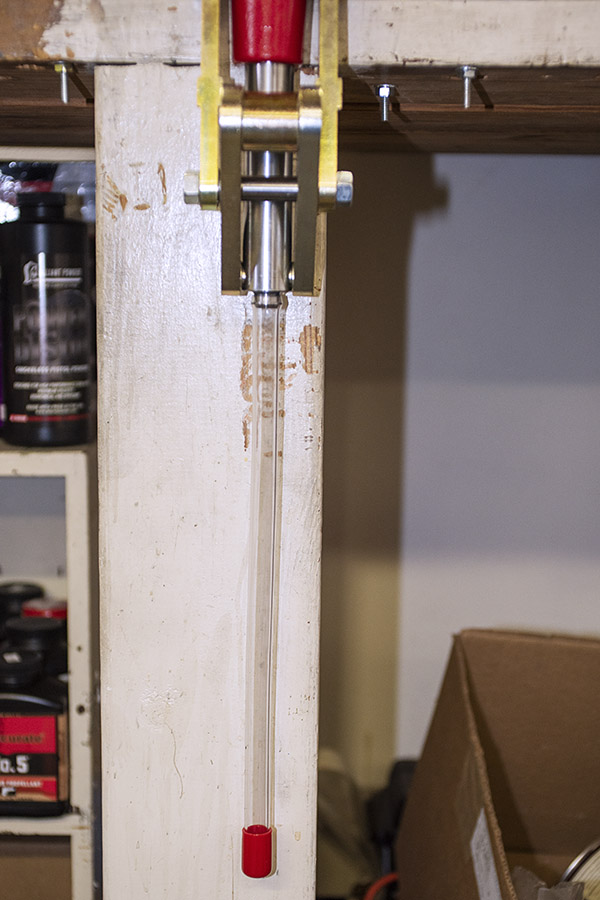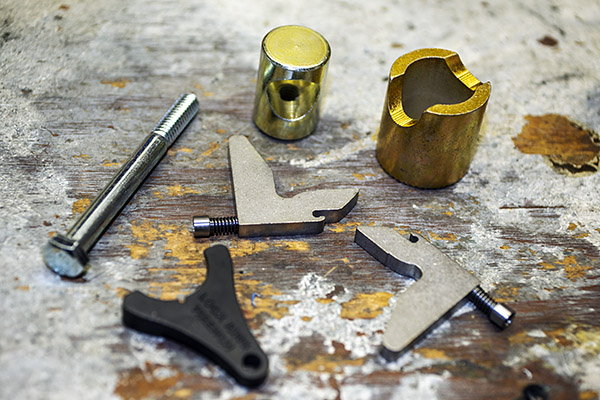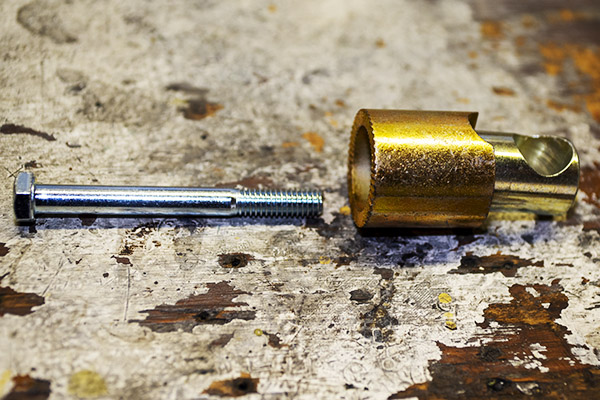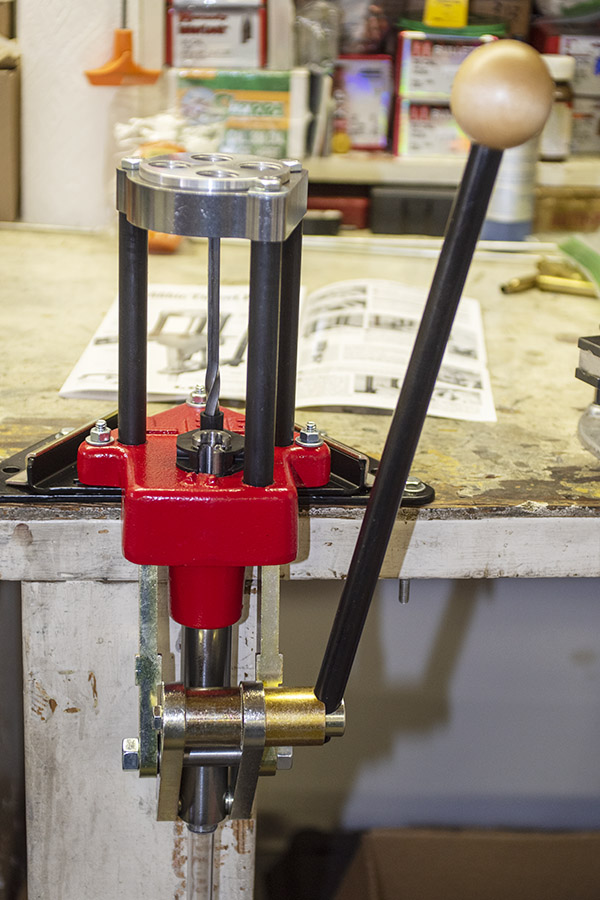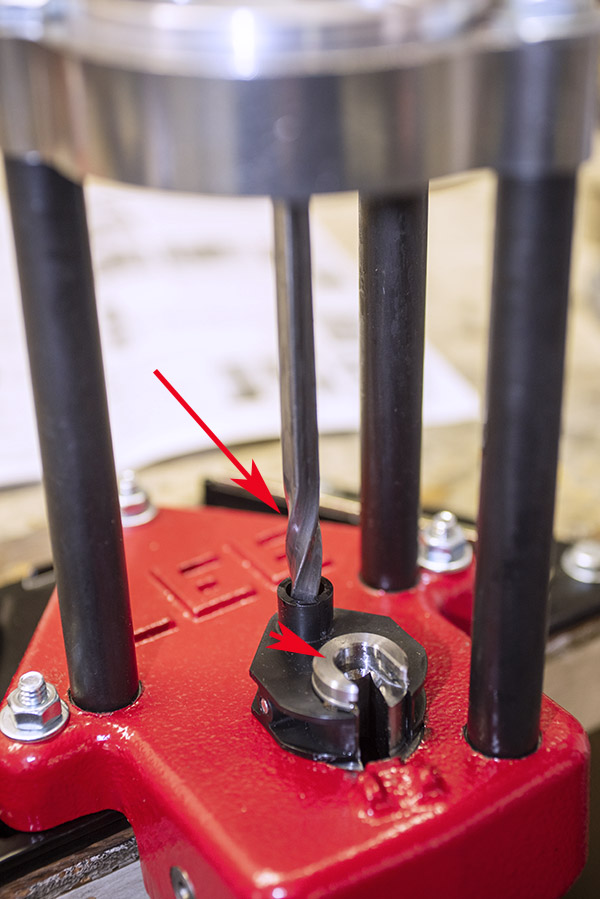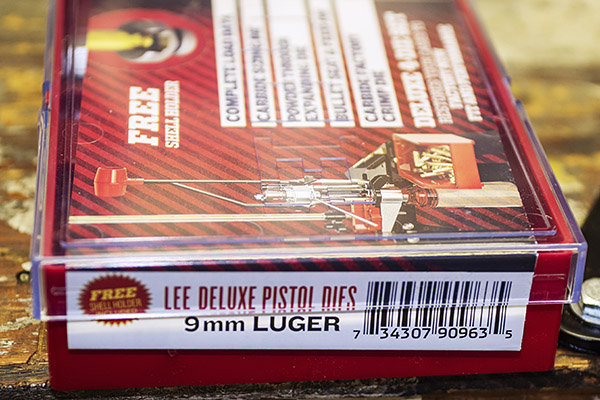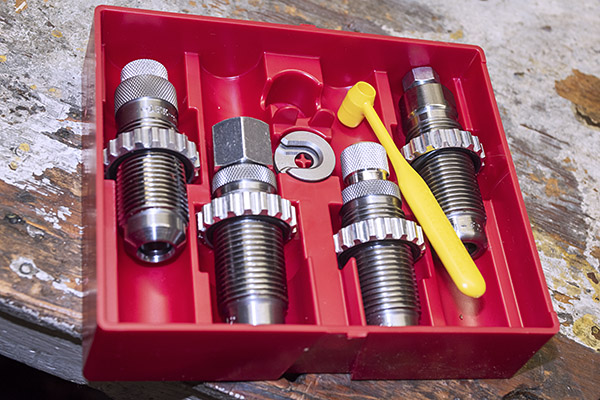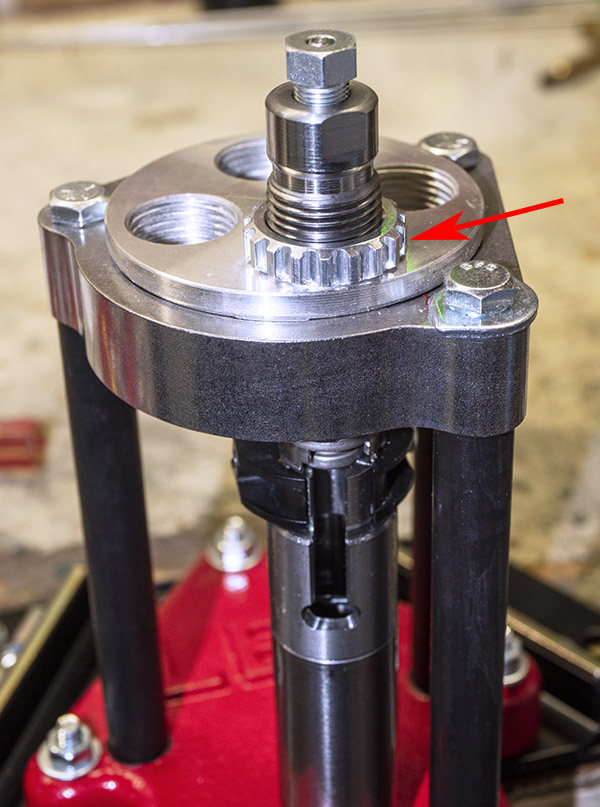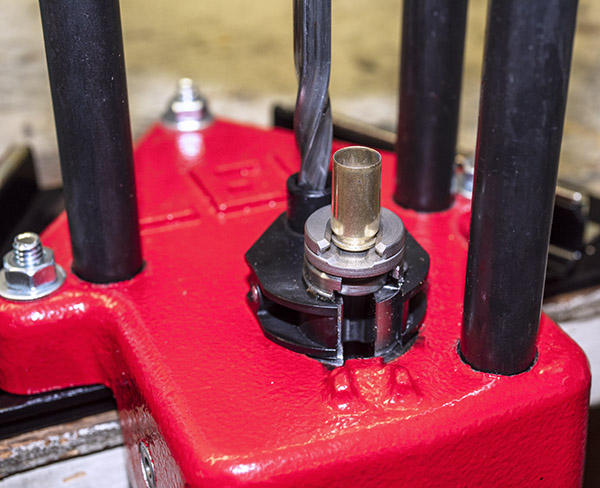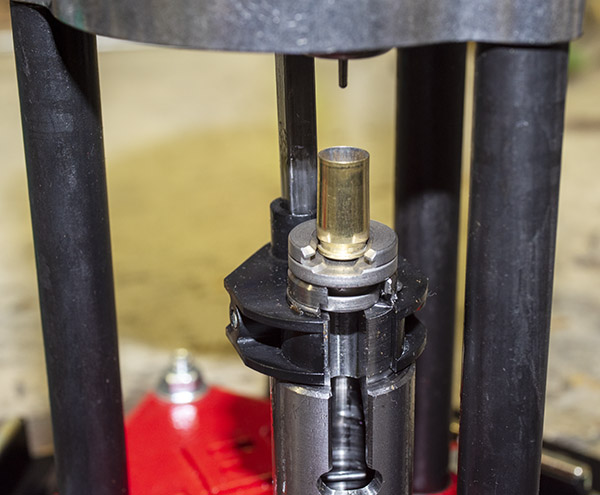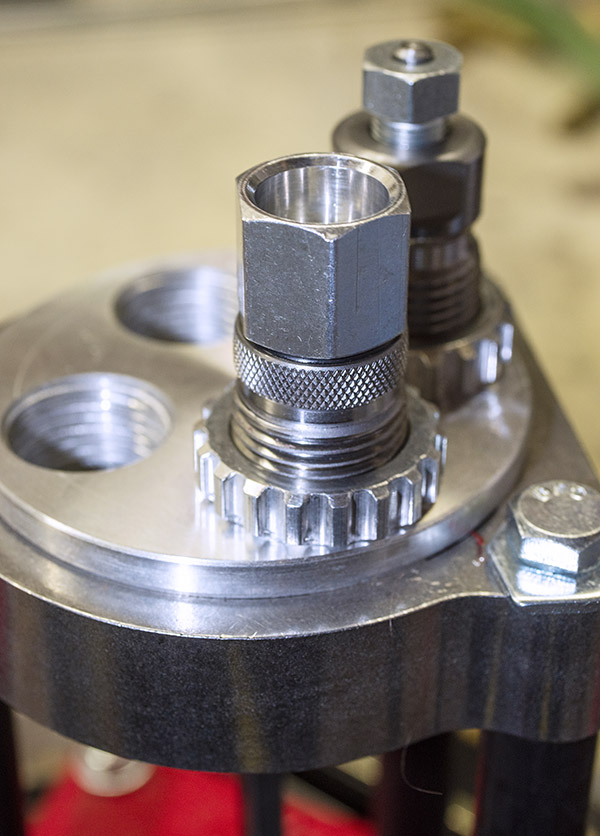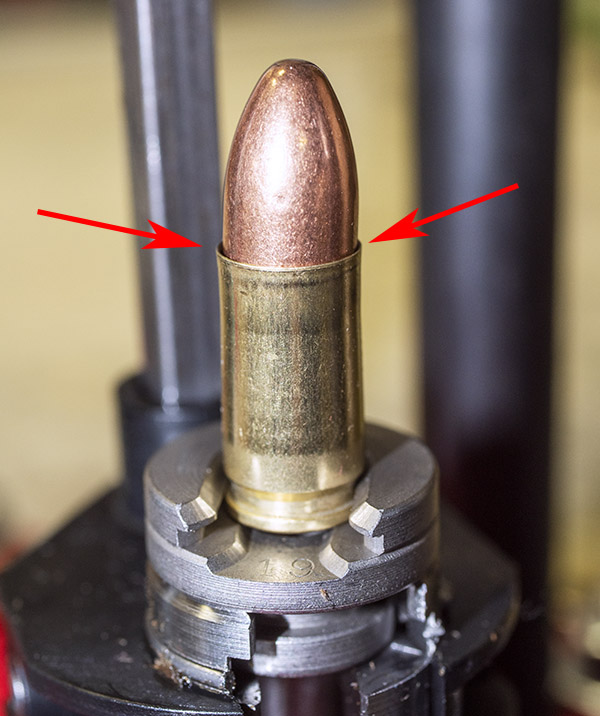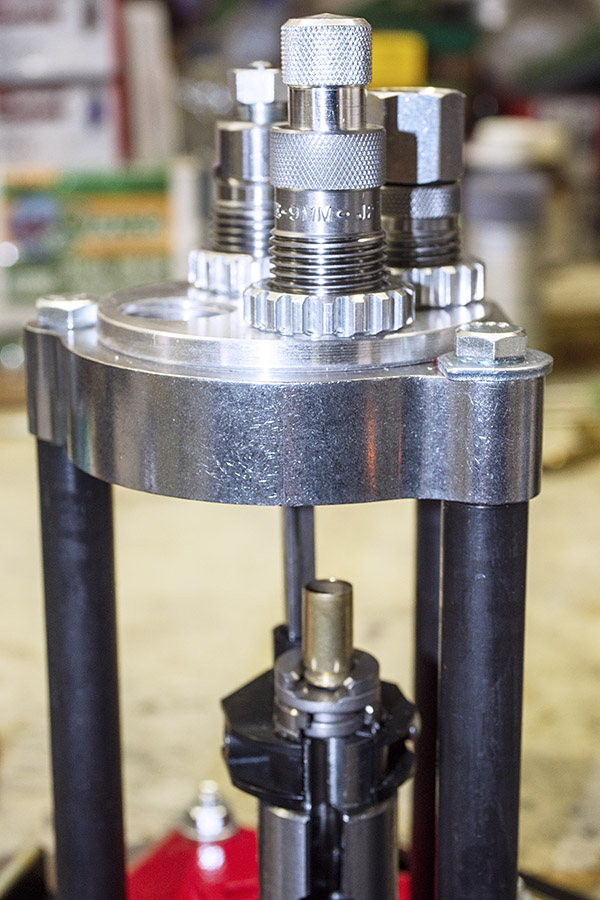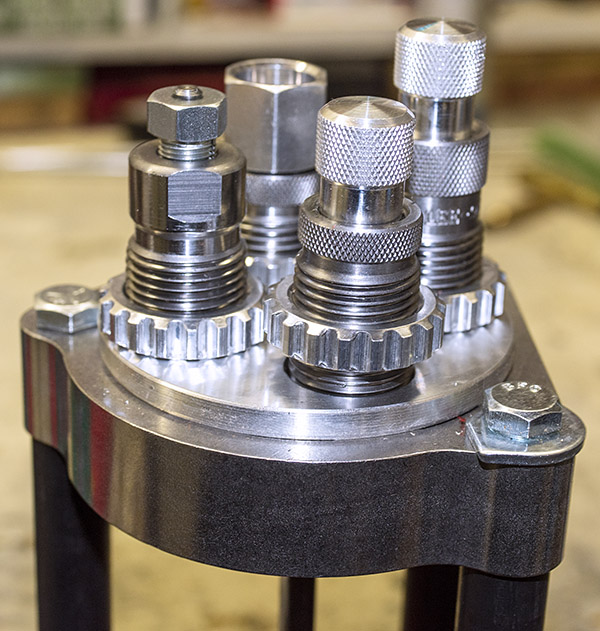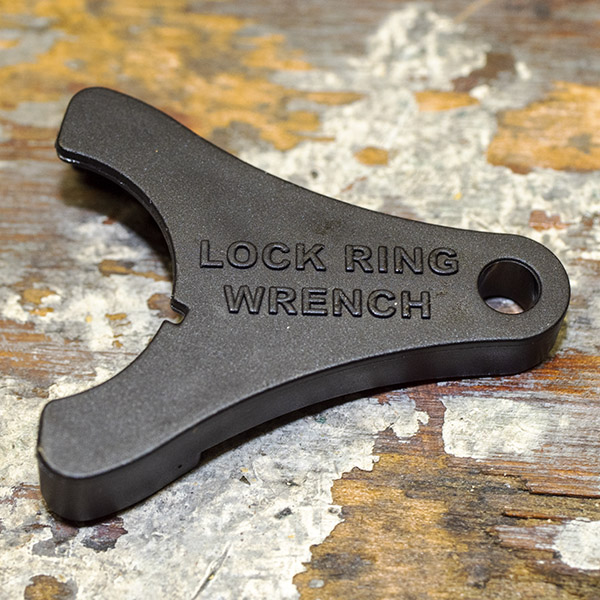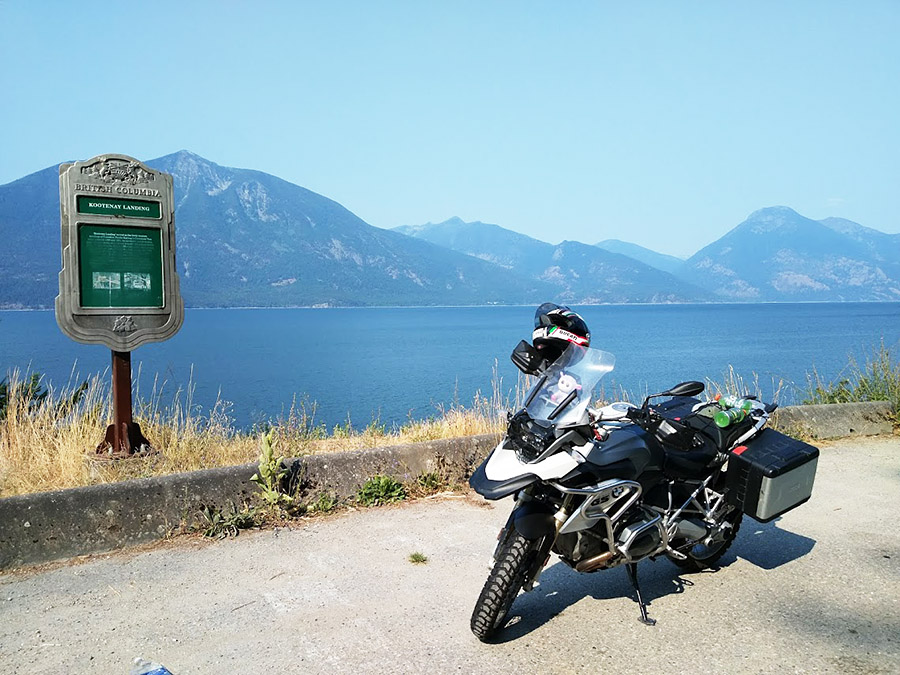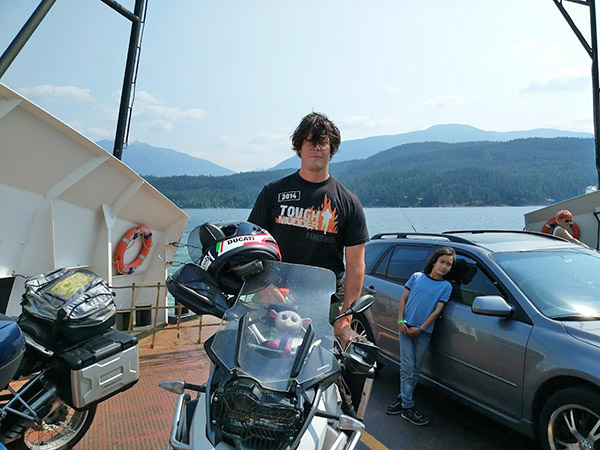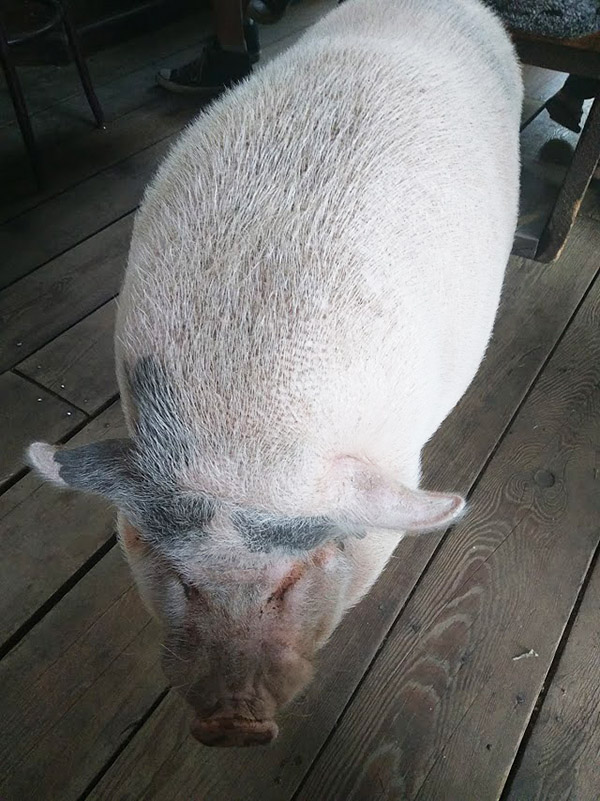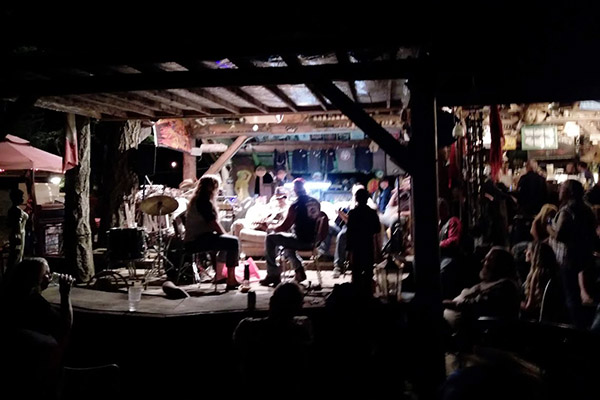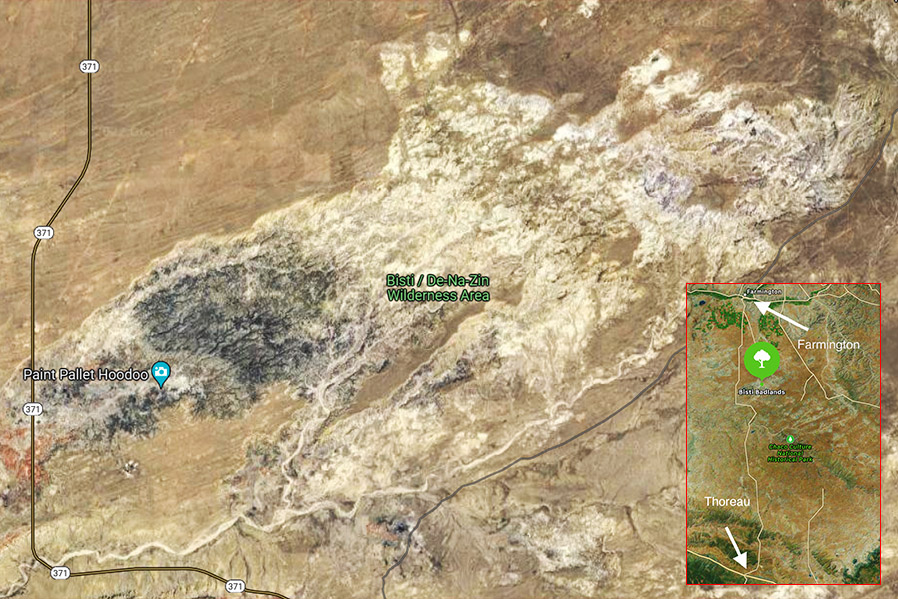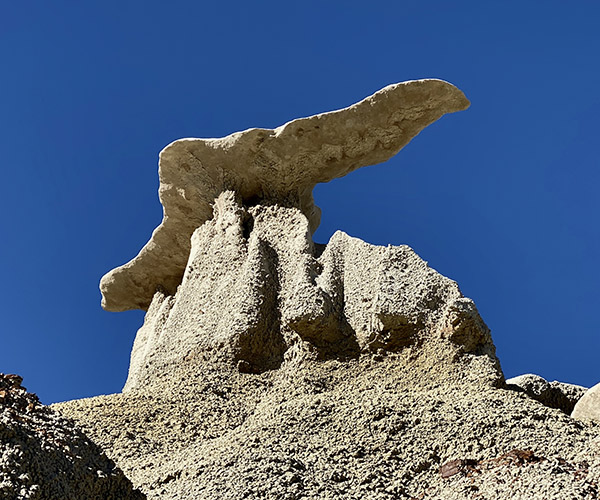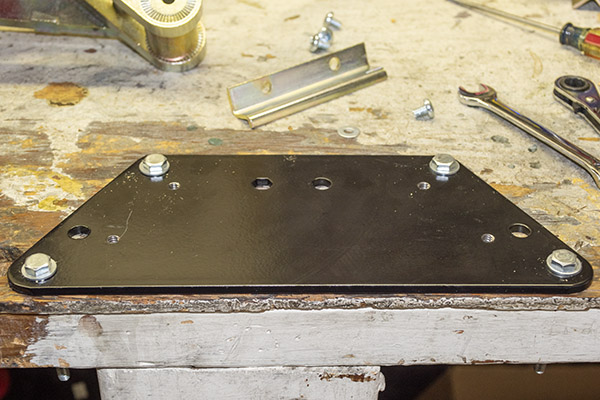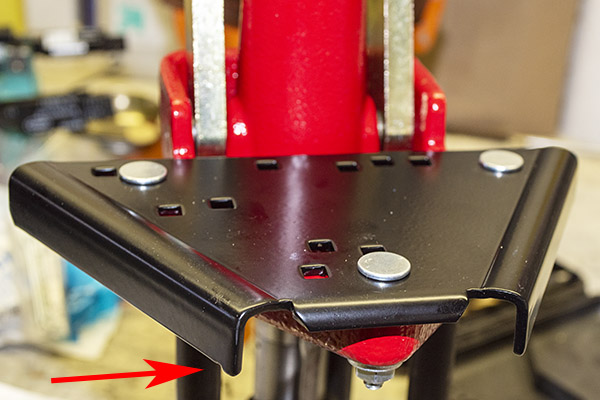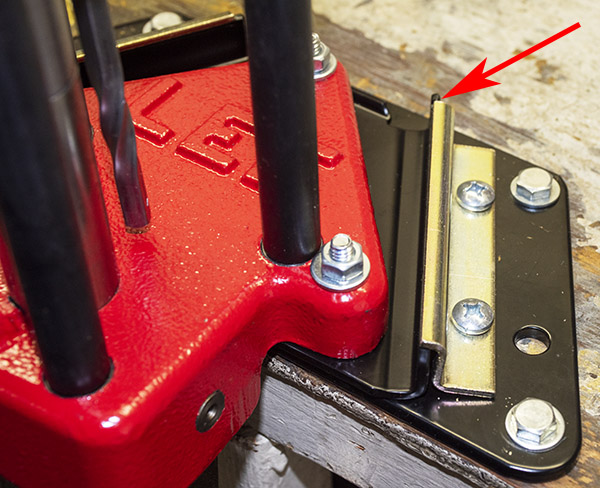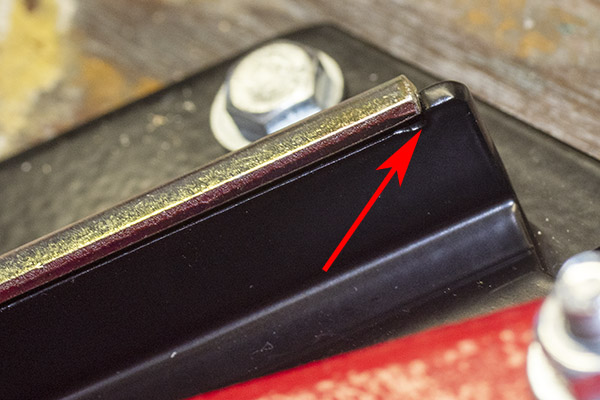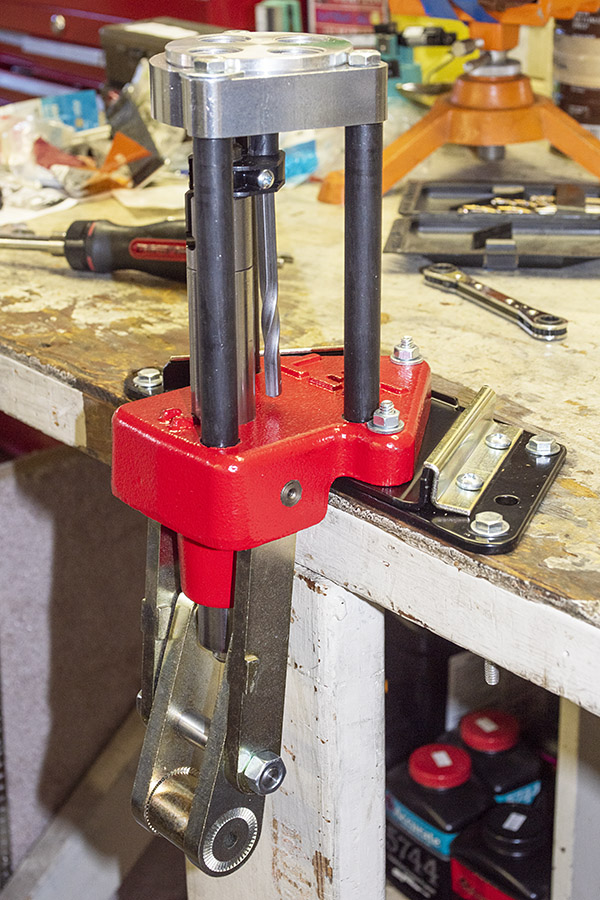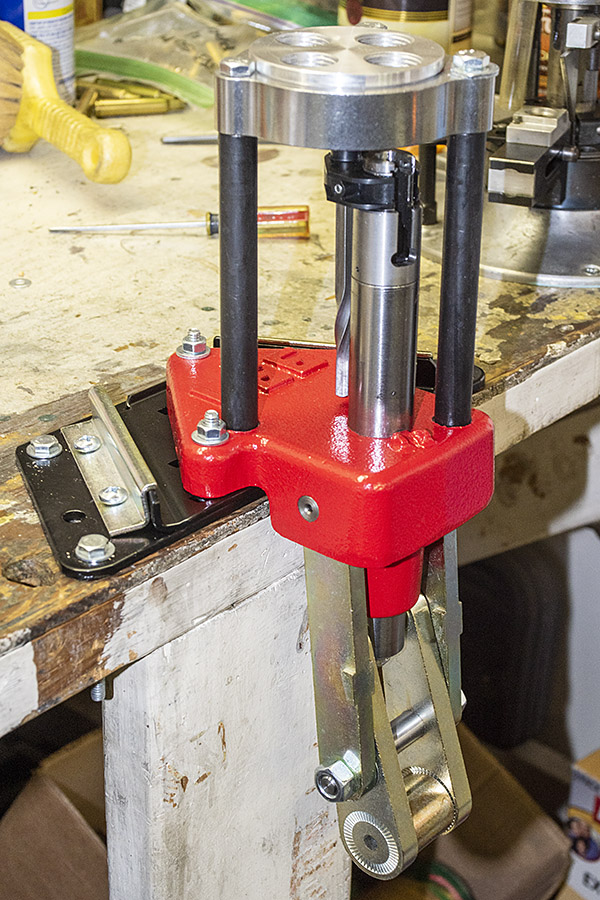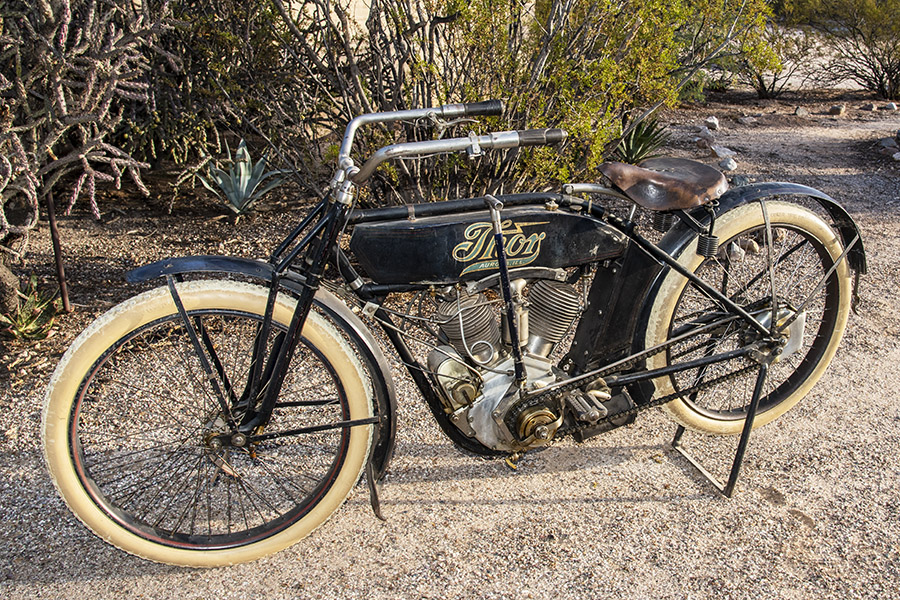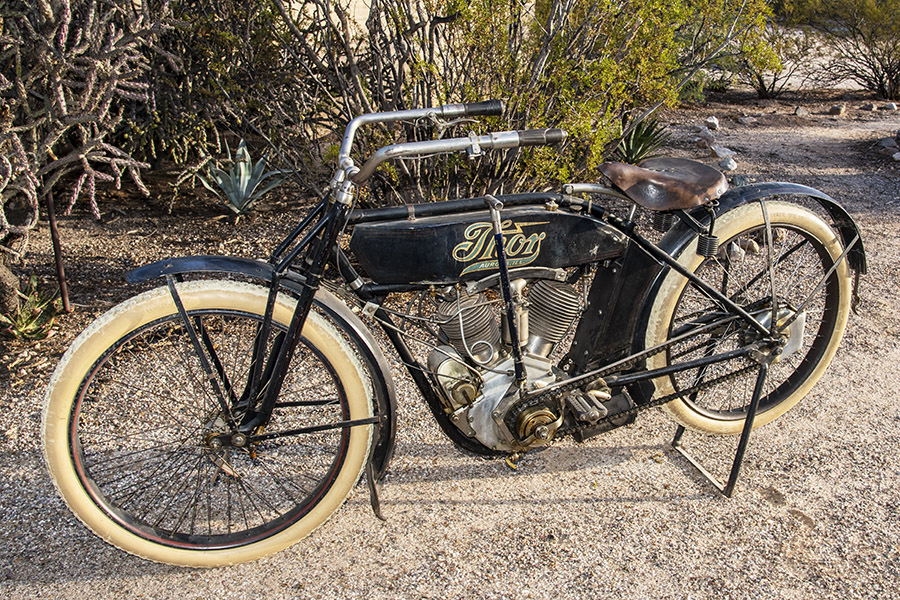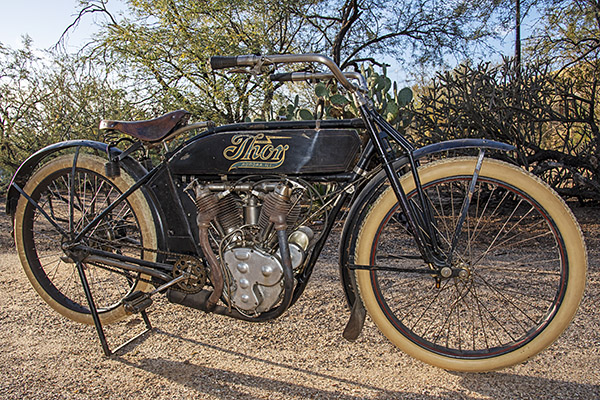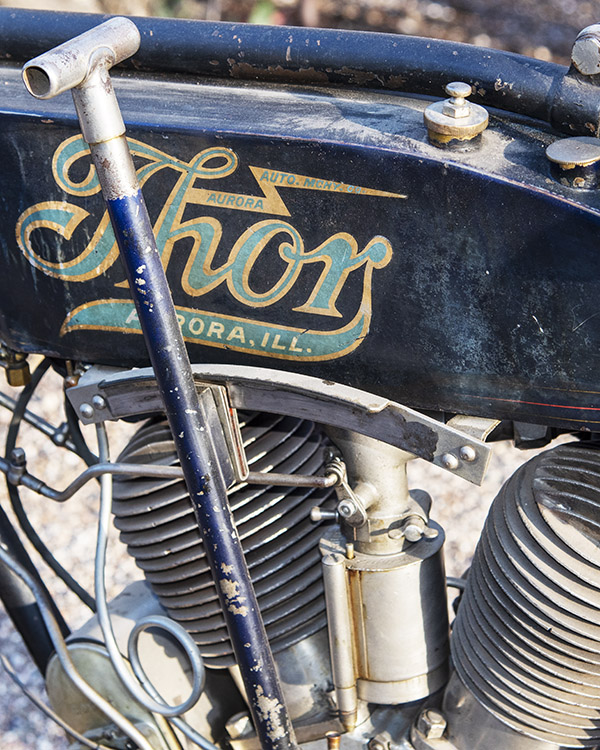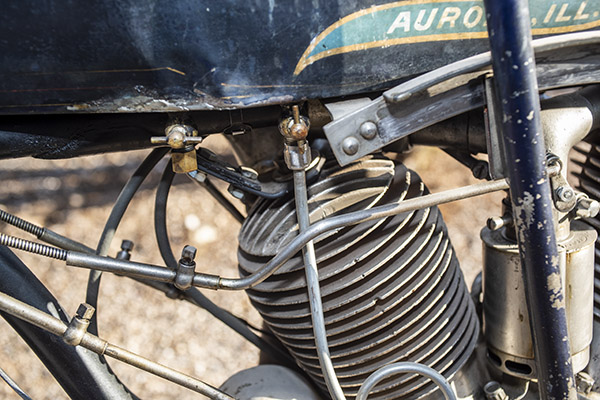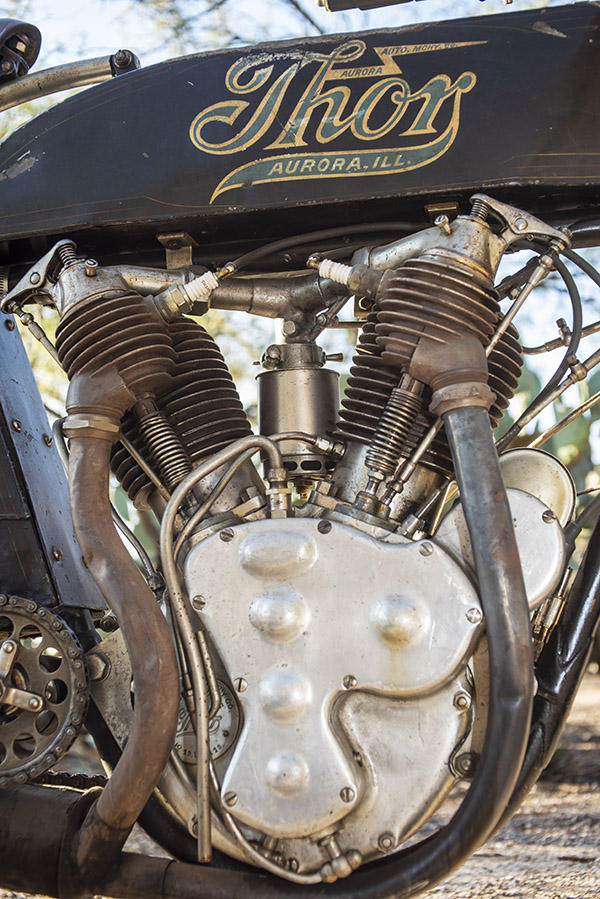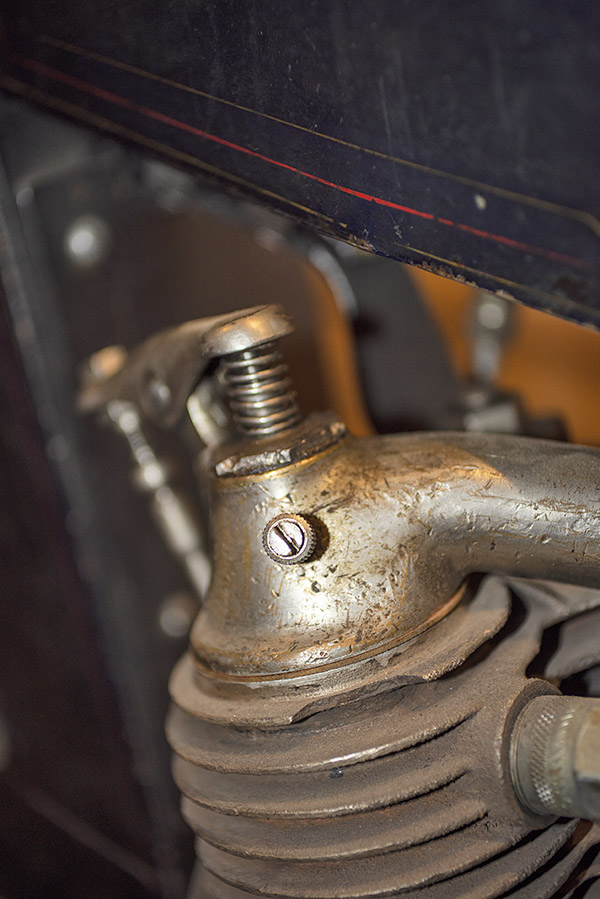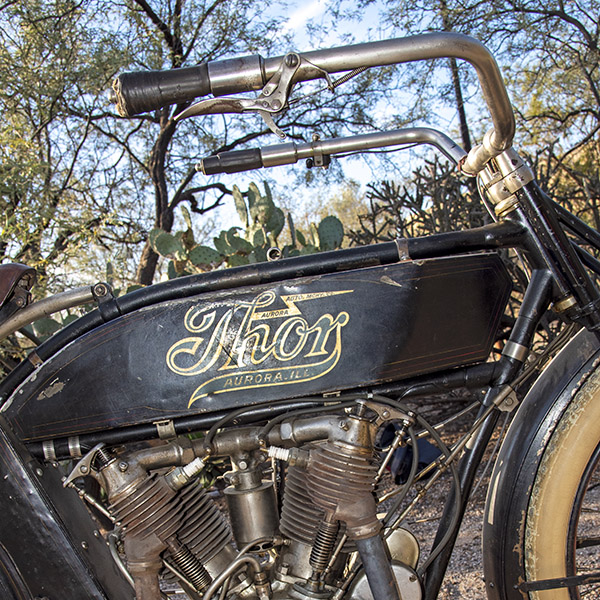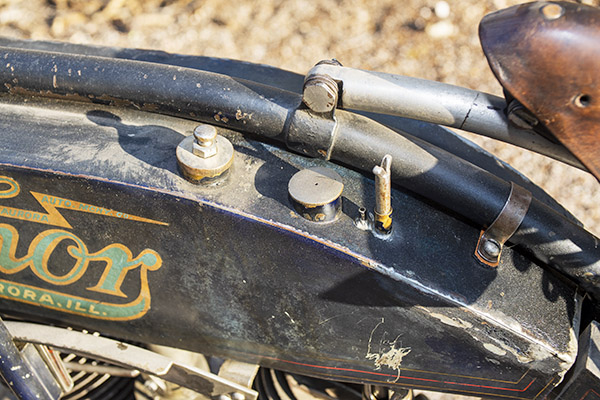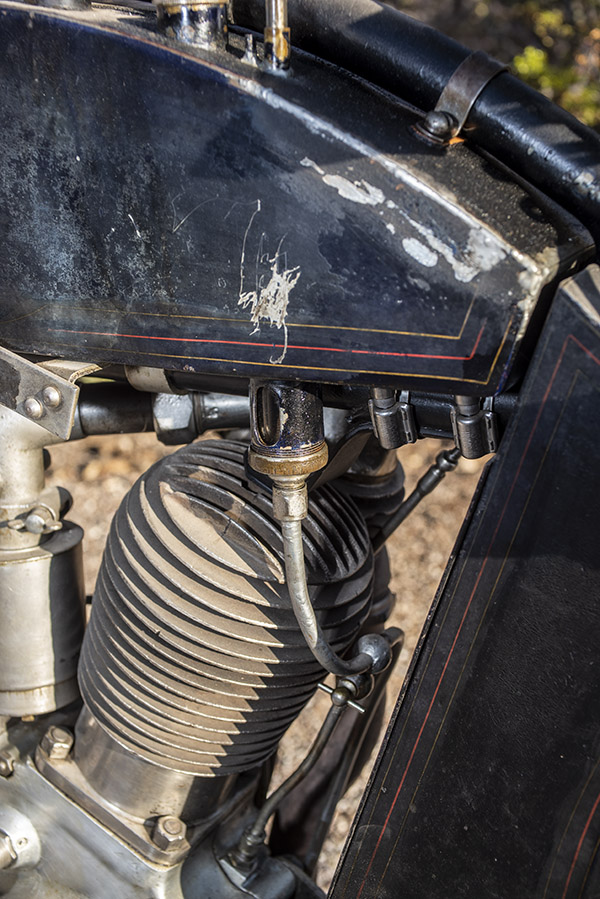By Mike Huber
There was no better way to ring in 2023 than camping off our motorcycles on a beautiful beach in Bahia Conception in Baja, Mexico. The only thing that made the moment more special was sharing cigars, Tecates, and Tequila with our new friends in the palapas to our left and right while sitting around a fire. Somehow, I managed to make it until 10 p.m., which is equal to a Boston New Year, and I surpassed my previous Baja New Year by 1 hour. I was pretty proud of myself.
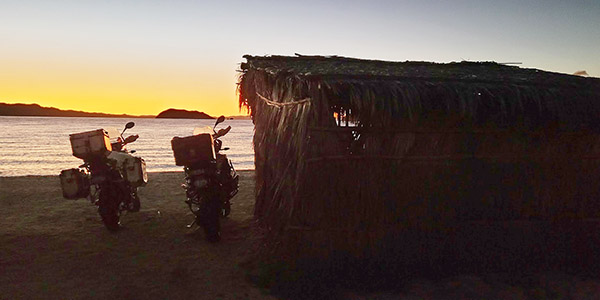 Groggily awaking the next morning to the sunrise peering over the mountains across the bay was a serene way to start the new year. Once we had a coffee (or three) in us we decided to pack up and make our way back north. The plan was originally to hotel in Guerrero Negro for the night, but we had made such incredible time riding that we arrived in town by 11:30, and it seemed too early to stop for the day. The biggest problem with this is once you leave Guerrero Negro there isn’t much (really anything) until you arrive in Gonzaga Bay, which is another 4+ hours of riding and the possibility of bad winds. We rolled the dice and decided to attempt the ride to Gonzaga confident we would arrive just before sunset, which I had confirmed was at 16:49 PST.
Groggily awaking the next morning to the sunrise peering over the mountains across the bay was a serene way to start the new year. Once we had a coffee (or three) in us we decided to pack up and make our way back north. The plan was originally to hotel in Guerrero Negro for the night, but we had made such incredible time riding that we arrived in town by 11:30, and it seemed too early to stop for the day. The biggest problem with this is once you leave Guerrero Negro there isn’t much (really anything) until you arrive in Gonzaga Bay, which is another 4+ hours of riding and the possibility of bad winds. We rolled the dice and decided to attempt the ride to Gonzaga confident we would arrive just before sunset, which I had confirmed was at 16:49 PST.
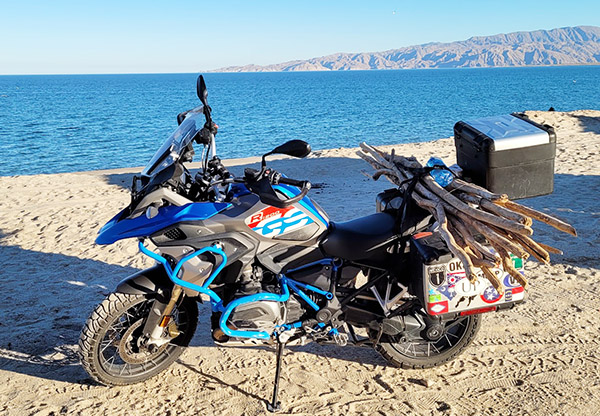
The ride up was rather uneventful and even the winds seemed to be cooperating with us on the last leg of this ride. In pulling up to the Rancho Grande Tienda to reserve our campsite, refuel the bikes, and load up on firewood we were starting to feel the 320 miles we had just completed. One of the cool things about camping in this location is the rather long bundle of firewood they provide. Every time I load the wood on the moto it looks like some type of biplane. What completes the biplane feeling is riding to the palapas on the bay you are parallel with an airstrip, so you actually feel like you are about to take off. Just as we hit the 1-kilometer dirt road the winds began to increase heavily. This was the norm for this part of Baja and wasn’t too alarming for us.
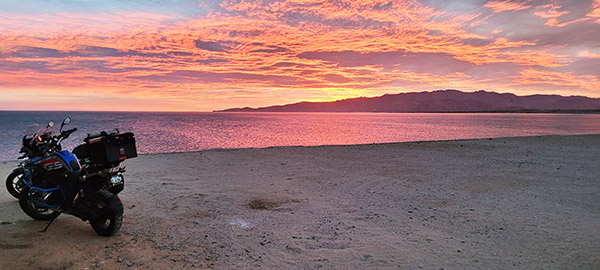
Thankfully the palapa provided us with some protection from the swirling gusts, but not from the roaring freight train sounds that would keep us awake through the night as a demoralizing reminder that we’ll have to ride in them the following day.
After setting up our home for the evening it was time for a cold Tecate beer to unwind and enjoy the gorgeous views of the bay and the mountains that surround it. As I sat in my chair, I noticed a lone paddleboarder in the bay and became a bit alarmed with his lack of movement while he struggled to fight the wind to return to shore. He was quite a ways out and it was obvious the wind was physically and mentally wearing him down from this difficult battle. I could see him stand up to paddle ferociously for a few moments and then he would lay on the board, clearly to rest. This went on for about one more Tecate when I noticed it was 15:45. People were beginning to gather on the shore to watch his valiant yet seemingly unsuccessful attempt to return to his camp, but he wasn’t getting any closer. It was time for me to walk the beach and see who this person was with, gain insight on his experience level, how long he was out for, and determine next steps (if any were needed).
Keep us publishing….please click on the popup ads!
After a few minutes I found his wife who didn’t seem to be concerned until I mentioned that sunset would be in an hour. At that moment the full weight of the situation set in, and she became frantic. Being one to always travel with a SpotGen 3 GPS emergency beacon I powered it on, gave her a brief tutorial on how to activate the SOS button, handed it to her and said, “If I am not back in 15 minutes you push the SOS button.” I then directed her to drive the bay in search of a fisherman or boater that could possibly assist. While she was working the problem from that angle, I fired up the BMW GS1200 and returned to the tienda to see if I could find a local that could assist in what clearly was becoming a rescue operation.
The locals in the tienda didn’t seem to know anyone that could help. This was not what I expected, and my brain was scrambling for any other ideas to save this person. As I exited the store the man’s wife came flying into the parking lot creating a mini dust storm from her sprinter van. She was even more panicked then earlier. Just as I was about to take the GPS beacon, return to the location of the paddleboarder and press SOS we saw a 1960s VW van with some surfers with their boards on the roof. After explaining the situation, they fully agreed to help, and we all raced back to the beach. We had 40 minutes of sun left before it disappeared over the desert mountains behind us. Once our rescue caravan arrived one of the surfers quickly dawned his wetsuit, grabbed his board, and was off into the cold, windy waters. Fortunately, it didn’t take him very long to reach the distressed paddler, secure his paddleboard to his surfboard and tow him back in. Everyone was safe and back on shore with 10 minutes of sunlight remaining.
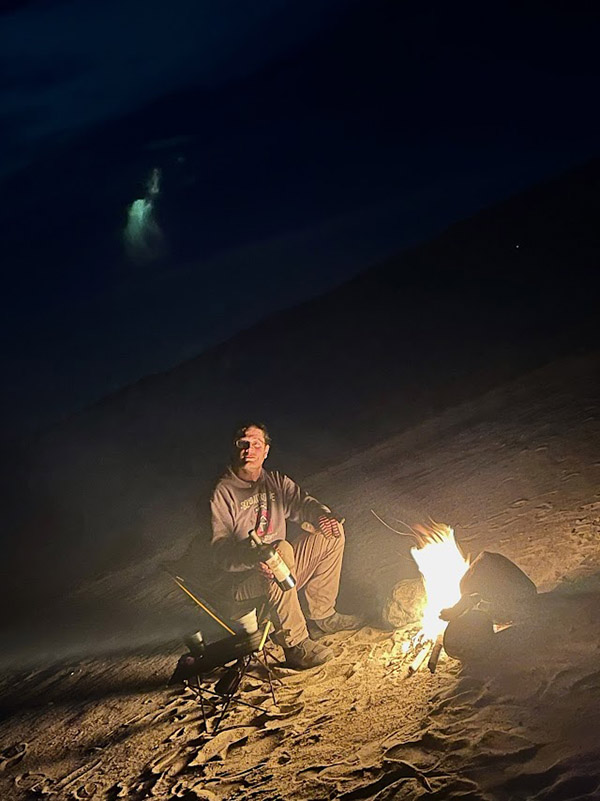
The rescue operation was a success. The hero surfers made a hasty exit just as the last rays of light from the sun began to fade into the lonely desert. An hour later the family came over to our palapa to gift us with a couple bottles of wine as a thank you for assisting in the rescue mission. Of course, we invited them to share our campfire. Chatting with the paddleboarder, we learned this was his first paddleboarding experience. Together we relived the moments of the day from each of our perspectives while drinking the wine and enjoying the glow of the fire. What could have been a much worse ending was nothing more then a valuable lesson for him. The true heroes were the surfers, and I never even got their names before they rolled back down the dusty road and into the Baja desert.
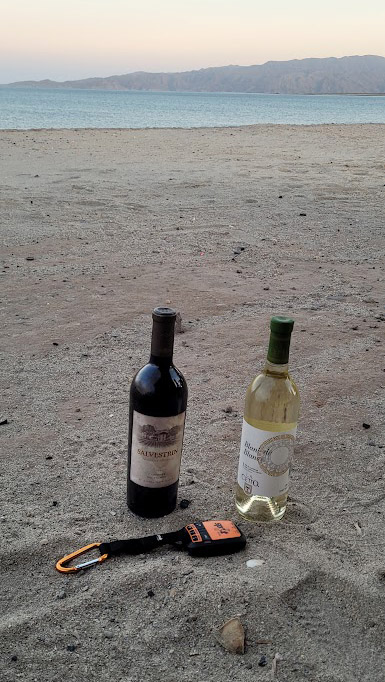
More good Baja articles and stories!
Headed into Baja? Insure with the best: BajaBound!
Never miss an ExNotes blog:

